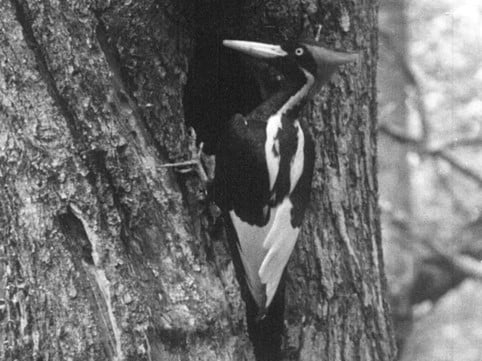Male Ivory-billed woodpecker. Source: Cornell Laboratory of Ornithology
“Billy Bartram’s Nature Notes”
One of a bird watcher’s “holy grail” birds is the Ivory-billed woodpecker. Once abundant across much of the southeastern U.S., the bird is almost extinct from the continental U.S. mainly due to loss of its required habitat: old growth bottomland hardwood swamps in the floodplains of streams and rivers. The birds need very old trees, which hollow out with age, or standing dead snags.
These are the sites where they create their nest cavities and they also support the insect food resources the birds feed on. In Part 2, Chapter 10 of “Travels”, William lists the fauna he observed in his explorations and references a “greatest (=large) crested woodpecker, having a white back.”
This is the Ivory-billed. We know it’s not the common Pileated woodpecker, because he also lists a “great red crested black woodpecker”, which is the Pileated. That is the key character to distinguish the two birds; the Ivory-billed shows white on its back when it is clinging to a tree trunk, while the Pileated shows a black back. In the legend to his list of fauna, he indicates the Ivory-billed is “native of Carolina and Florida, where they breed and continue the year round.”
